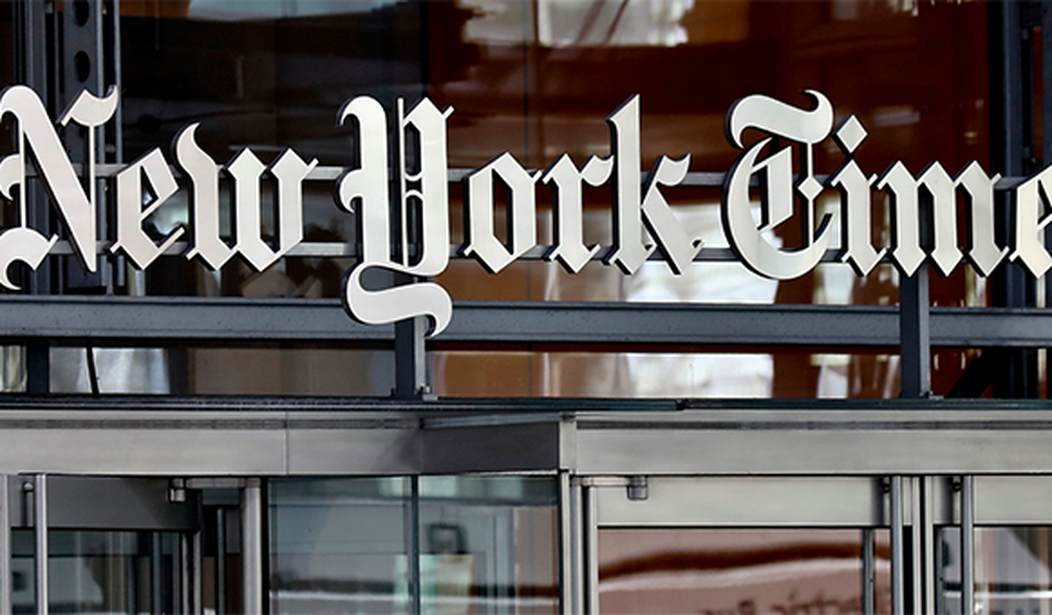A few weeks ago, John covered a story about former New York Times reporter Nellie Bowles quitting her job at the Gray Lady and writing a newsletter for Bari Weiss’ Substack. That was, as John put it, sort of an inside baseball report for those who closely follow the political media industry, or at least it seemed so at first glance. In her newsletter, Bowles described the shifting attitude in the New York Times newsroom and how she “became suspect” at the paper when she failed to “cheer on” or at least ignore a leftward power shift in both the country and American newsrooms.
But one other item from her inaugural newsletter is now becoming of more interest. While pointing readers to her previous work at the Times, she specifically listed and linked a few articles covering the impact of last summer’s riots on small businesses. (The stories can be found here, here, and here.) She didn’t say any more about that topic at the time, but since she was bringing it up only weeks after she quit her job at the newspaper, perhaps we should have guessed there was more to the story. Now we know there was. Bowles is back and she’s describing how she wrote an article covering the riots in Kenosha last August and the impact they had on local businesses. But to her surprise and apparent suspicion, her editors informed her that the story wouldn’t run until after the election. (NY Post)
A former New York Times reporter claims the newspaper held her story about the ravaging effects of the Kenosha riots on impoverished neighborhoods until after the 2020 elections.
Nellie Bowles went to the Wisconsin city to report on the racial justice riots in the wake of the police shooting of Jacob Blake in August 2020, according to a Thursday post on partner Bari Weiss’ Substack channel Common Sense…
Bowles said she was sent to report on the “mainstream liberal argument” that vandalizing buildings for racial justice was not detrimental because businesses had insurance.
“It turned out to be not true,” Bowles wrote. “The part of Kenosha that people burned in the riots was the poor, multi-racial commercial district, full of small, underinsured cell phone shops and car lots. It was very sad to see and to hear from people who had suffered.”
There are some fairly remarkable revelations packed into just a few paragraphs there. First of all, Bowles wasn’t just sent to Kenosha to cover the riots. She was sent to report on “the ‘mainstream liberal argument’ that vandalizing buildings for racial justice was not detrimental…”
Apparently, the people in charge at the newsroom failed to mention that any reporting on that argument would only be “fit to print” if it agreed with the premise of the editors. When Bowles discovered that the argument was untrue and that both businesses and residents were suffering as a result of the riots, she reported those observations. But upon submitting the article, Bowles was informed that it would not be run until after the election. The reason given was that the delay was being caused by “space, timing, tweaks.”
That was in August. The election wasn’t going to take place until more than two months later. But you’ll notice that her editors didn’t say that the article would run when they had more space (and who worries about space in the digital era?) or when the “tweaks” were finished. The only thing holding up the publication of her work was obviously the “timing.” And that timing meant that an article shooting holes in a liberal talking point in the heat of the final weeks of a presidential election simply wouldn’t do. The article was eventually published, but only after the election was safely behind Joe Biden.
This information from behind the walls of the New York Times ties together two common trends that have been on display for some time at that paper. The first was their biased coverage of the election in favor of Joe Biden (along with their seething hatred of Donald Trump) and the second was their equally biased and frequently inaccurate coverage of the entire Kyle Rittenhouse saga. No stories that looked bad for the extreme progressive orthodoxy that Biden was pushing on the campaign trail could be allowed. And Rittenhouse was frequently and incorrectly characterized as being a “self-proclaimed white supremacist” (a title he has never claimed) and someone who trafficked an illegal weapon across state lines (also not true, as we recently learned). The protests where Rittenhouse showed up and attempted to defend against property damage were righteous in the eyes of the Times.
Those factors turned Bowles’ article into a threat because they simultaneously stuck spears into two liberal sacred cows. As such, the article was squashed until after the election. Interestingly, if you go look at her latest newsletter, you’ll see that the story about her article being locked out doesn’t even appear in the main headline. It’s included as more of an afterthought. She features a number of other points that seem intended as a poke in the ribs to the liberal mainstream media, such as Bidenflation, the collapse of the Russiagate story, and the erasure of J.K. Rowlings for her defense of women in women’s sports. Something tells me that Ms. Bowles won’t be receiving job offers from the Washington Post or any other liberal news outlets in the foreseeable future.
EDIT: (Jazz) The original article incorrectly described the name and spelling of Bari Weiss and her relationship to Ms. Bowles. This has been corrected. Our apologies.








Join the conversation as a VIP Member